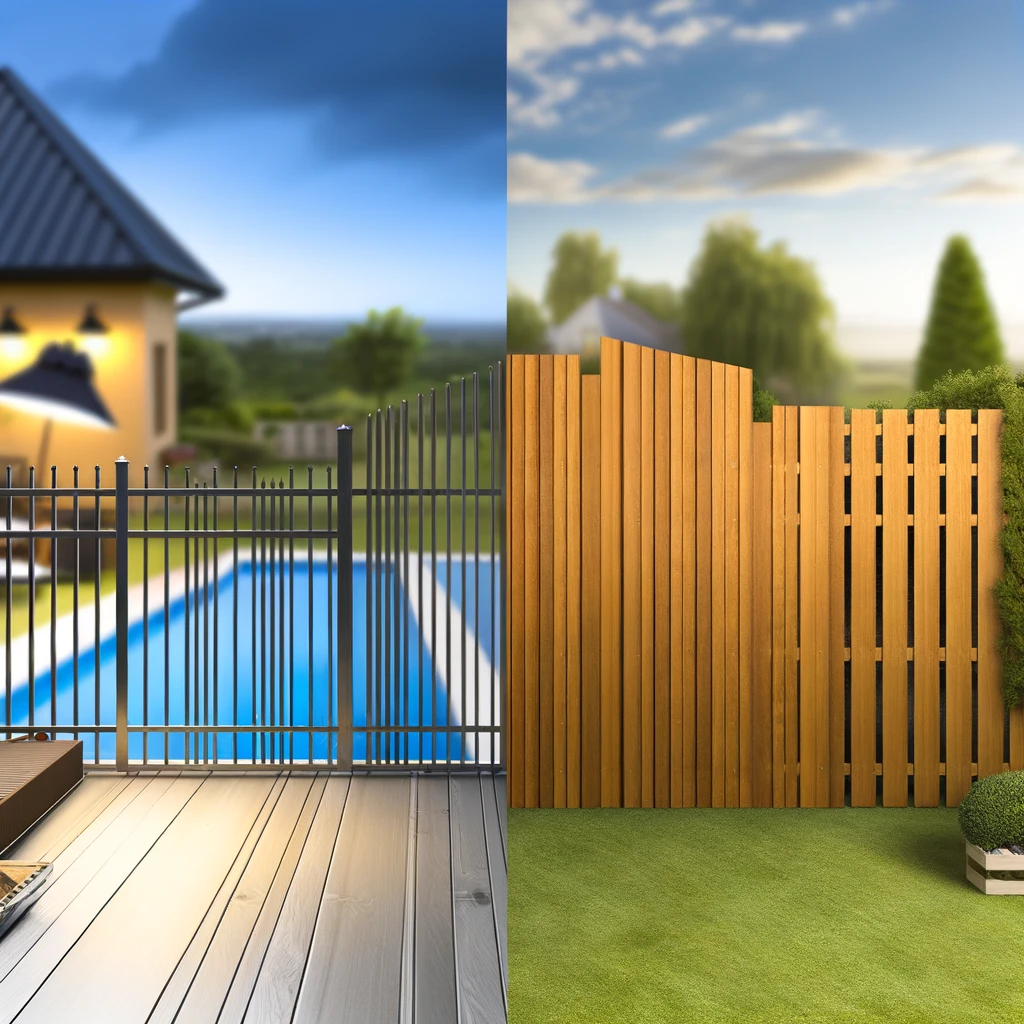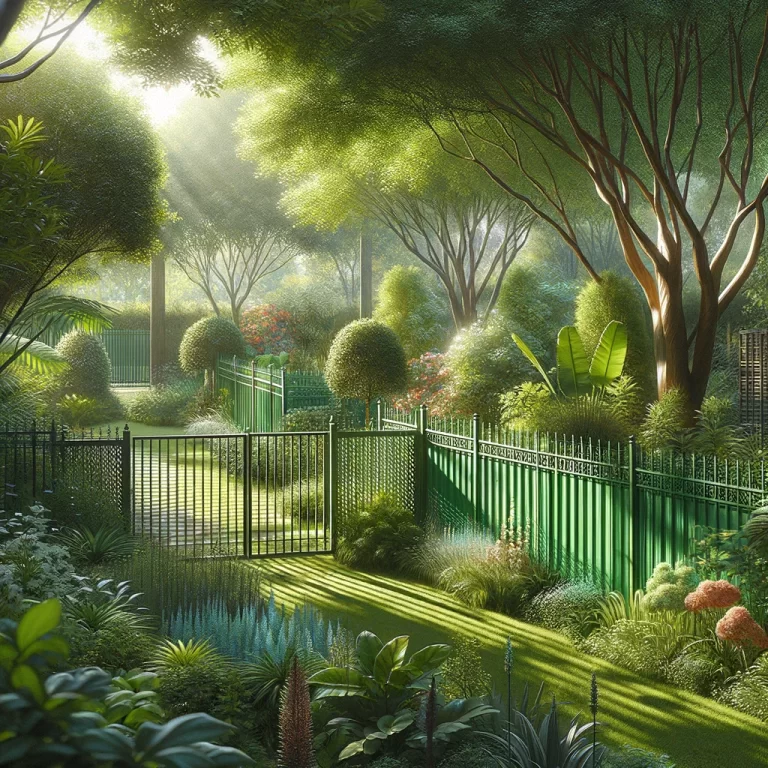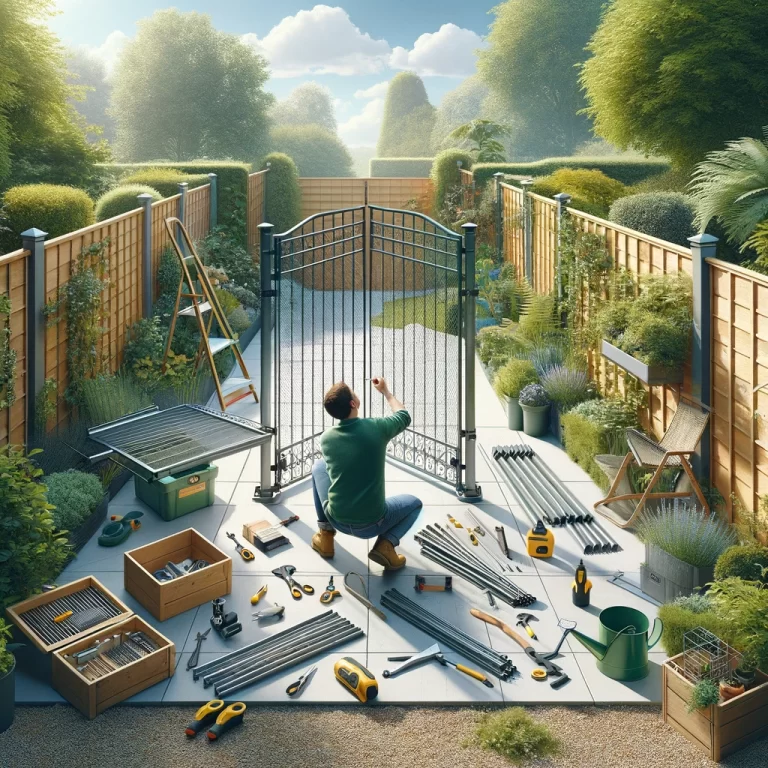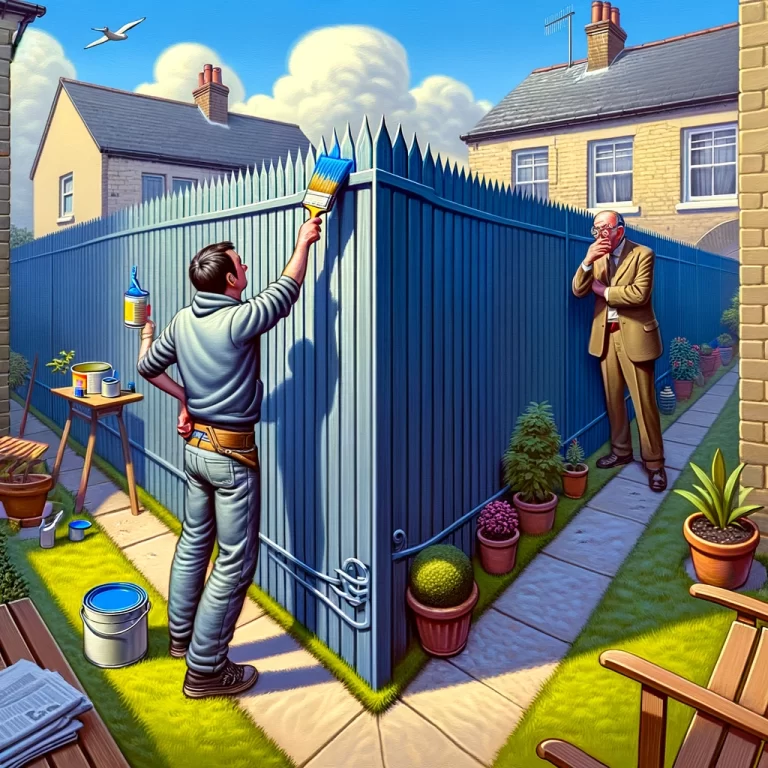If you’re in the market for a new fence, you may be wondering whether metal or wooden fences are the better choice in terms of durability and longevity. Factors such as the material used, climate conditions, maintenance, and quality of installation all play a role in determining the lifespan of a fence.In this article, we will compare the lifespan of metal and wooden fences, as well as explore the benefits of each type. So, which fence type lasts longer? Let’s find out.

What are the Factors that Affect the Lifespan of Fences?
The lifespan of fences is influenced by various factors such as the material used, climate conditions, maintenance practices, and the quality of installation.
Regarding materials, wooden fences are popular but may require more upkeep compared to vinyl or metal fences. The weather conditions in a region, whether constant sun exposure, heavy rain, or cold winters, can accelerate wear and tear. Regular maintenance routines like cleaning, sealing, and checking for damage can significantly prolong a fence’s life. Proper installation, ensuring sturdy posts and level panels, is crucial for withstanding external pressures. Choosing a fence design that complements the surroundings can also impact its durability as it enhances overall curb appeal and encourages homeowners to invest in maintenance.
Material Used
The choice of material in fencing, be it wood, vinyl, wrought iron, or chain link, significantly impacts the durability and longevity of fences.
Each type of fencing material possesses distinct characteristics that determine its performance over time.
- Wooden fences exude a traditional charm and can be customised to various designs, but they require regular maintenance like staining or painting to prevent rot and decay.
- Vinyl fences are low maintenance with a lifespan that can exceed 30 years, thanks to their resistance to pests, rot, and fading.
Wrought iron fences offer a classic aesthetic and exceptional strength, yet they are susceptible to rust if not properly coated and maintained. On the other hand, durable chain link fences are economical and provide security but lack privacy and may require occasional maintenance to prevent rusting.
Climate and Weather Conditions
The climate and weather conditions in a specific location play a crucial role in determining how long a fence will last, as exposure to elements can impact its structural integrity and appearance over time.
For instance, in areas with high humidity, wooden fences are more prone to rot and mould growth, shortening their lifespan significantly. On the other hand, in regions with extreme temperatures, such as frequent freeze-thaw cycles, metal fences may corrode faster. Precipitation, like heavy rain or snow, can accelerate wear and tear on all types of fences, leading to potential structural damage.
Protecting fences from these weather-related challenges is essential to prolong their durability. Applying a weather-resistant sealant or paint can create a protective barrier against moisture, UV rays, and temperature fluctuations. Regular inspections for signs of damage and prompt repairs can prevent small issues from escalating into costly replacements. Adjusting landscaping to provide natural windbreaks or shade can also shield fences from harsh weather conditions and increase their longevity.
Maintenance and Care
Regular maintenance and proper care are essential for preserving the lifespan of fences, as routine inspections, repairs, and treatments can prevent deterioration and prolong their longevity.
One vital aspect of fence maintenance is regular cleaning, as dirt, grime, and mould buildup can weaken the structure over time.
Moreover, painting or staining the fence can not only enhance its appearance but also provide a protective barrier against the elements, preventing rot and decay.
Sealing the wood or metal components is crucial to safeguard them from moisture, UV rays, and harsh weather conditions, which can cause cracks and corrosion.
In addition, timely repair of any damaged sections, such as loose boards or sagging panels, is paramount to maintain the fence’s stability and functionality.
Quality of Installation
The quality of fence installation, including proper placement, alignment, and support, is a critical factor that can significantly impact the longevity and structural stability of fences.
Professional installation plays a vital role in ensuring that the fence is positioned correctly within the designated area, taking into account factors such as property boundaries, landscaping features, and any potential obstacles. Careful consideration during the location selection phase can prevent future issues like uneven height variations or encroachment on neighbouring properties.
Ground preparation is another crucial aspect that professionals address to prevent issues such as uneven settling, misalignment, or unstable foundation. Properly compacting the soil, removing debris, and ensuring adequate drainage can help maintain the integrity of the fence over time.
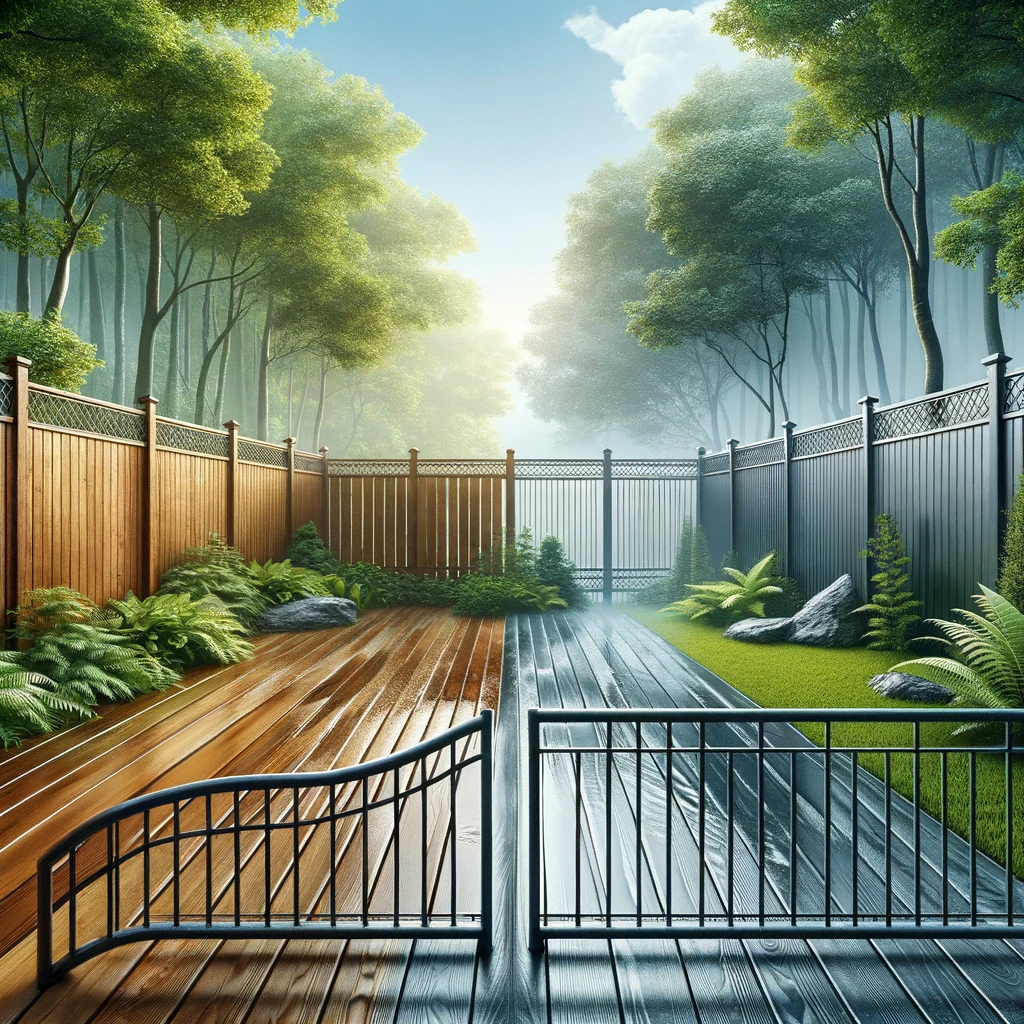
Comparing the Lifespan of Metal and Wooden Fences
When comparing metal and wooden fences, factors such as durability, resistance to elements, and maintenance requirements play a significant role in determining which type offers a longer lifespan.
Metal fences are often heralded for their durability, making them an attractive option for areas prone to heavy wear and tear or potential impact. Their sturdy nature can withstand harsh weather conditions such as rain, snow, and extreme temperatures, providing long-lasting protection for your property. Metal fences may be susceptible to rust over time, especially if not properly maintained with protective coatings.
On the other hand, wooden fences evoke a charming, natural aesthetic but may require more vigilant upkeep to ensure longevity. While wooden fences can offer decent durability, they are more vulnerable to rot, insect infestation, and warping due to moisture exposure. Regular staining, sealing, and repairs are essential to maintain the integrity of wooden fences, particularly in humid or wet climates.
Durability
Durability is a key factor when comparing metal and wooden fences, as the ability to withstand wear, impact, and environmental exposure determines the longevity of fencing materials.
Metal fences are renowned for their exceptional structural strength, making them ideal for security purposes. The robustness of materials like wrought iron, aluminium, or steel ensures that these fences can withstand harsh weather conditions, high winds, and potential impacts. Metal fences exhibit excellent corrosion resistance, preventing rust or decay over time.
On the other hand, wooden fences offer a classic and natural look but require regular maintenance to enhance their durability. Woods like cedar, redwood, or pressure-treated pine can withstand rot, decay, and insect damage when properly treated and sealed. These treatments significantly impact the lifespan of wooden fences, protecting them from moisture and UV exposure.
Resistance to Elements
The resistance of fences to elements such as harsh weather conditions, moisture, and UV exposure is a critical factor in determining their longevity and performance, especially when comparing metal and wooden fencing types.
Metal fences generally exhibit superior durability against extreme weather conditions like heavy rain, snow, and intense sunlight due to their inherent strength and corrosion resistance properties.
On the other hand, wooden fences can be more susceptible to moisture damage and UV degradation, requiring regular maintenance tasks such as staining or painting to protect the wood from warping, rotting, or fading.
This difference in weather resistance directly impacts the ongoing maintenance needs and lifespan of each fencing material, with metal fences usually being lower maintenance and longer-lasting than their wooden counterparts.
Maintenance and Repair
Maintenance and repair requirements vary between metal and wooden fences, with each material demanding specific care routines to ensure longevity and aesthetic appeal.
Regarding metal fences, regular inspection for signs of rust or corrosion is crucial. Any spots showing rust should be promptly sanded down and repainted to prevent further deterioration. Applying a protective sealant can help to shield the metal from moisture and other elements.
For wooden fences, routine cleaning with mild soap and water, followed by a fresh coat of paint or stain, can help maintain their appearance and prevent rotting.
Wooden fences are more susceptible to warping and rot compared to metal fences, so it’s essential to address any signs of damage promptly. In contrast, metal fences are prone to rust, which can compromise their structural integrity if left unchecked. By staying proactive with maintenance, both metal and wooden fences can have their lifespan extended significantly.
What are the Benefits of Metal Fences?
Metal fences offer numerous advantages, including exceptional longevity, unparalleled strength, enhanced security, and minimal maintenance requirements.
Regarding longevity, metal fences stand out as they are highly resistant to weather elements, corrosion, and wear, ensuring they can last for decades without losing their structural integrity. Their robust construction provides unparalleled strength, making them a reliable option for protecting properties from intruders and unwanted animals.
The enhanced security features of metal fences, such as their solid panels and height options, help in fortifying boundaries and deterring potential trespassers. This added layer of security not only safeguards your property but also provides peace of mind.
The low maintenance requirements of metal fences make them a practical choice for homeowners and businesses alike. Unlike wood fences that require regular staining or painting, metal fences simply need occasional cleaning to maintain their appearance, saving you time and money in the long run.
Longevity
The longevity of metal fences surpasses many other fencing options, providing property owners with a durable and long-lasting solution for boundary demarcation and security.
Materials such as wrought iron, steel, and aluminium are renowned for their exceptional durability against harsh weather conditions and environmental factors. These metals are resistant to corrosion, rust, and decay, which significantly extends the lifespan of metal fences.
One of the key advantages of opting for metal fencing is the long-term cost savings. While the initial investment may be higher than other materials, the minimal maintenance requirements and resistance to wear and tear mean that property owners can enjoy decades of reliable security without the need for frequent replacements.
Strength and Security
Metal fences are renowned for their exceptional strength and security features, making them ideal for properties seeking robust perimeter protection and aesthetic appeal.
One of the key advantages of metal fences, such as wrought iron and steel, lies in their unparalleled resistance to intrusion and impact. These materials provide a reliable deterrent against trespassers and vandals, ensuring enhanced security for residential and commercial properties alike.
The robust construction of metal fencing, coupled with features like anti-climb designs and sturdy posts, further reinforces the protection of the property. These fences are not only durable but also offer a stylish and classic appearance that adds value to any property.
Low Maintenance
Metal fences require minimal maintenance compared to other fencing materials, reducing the time and costs associated with upkeep whilst preserving their structural integrity and aesthetic appeal.
Aluminium fences, for instance, are known for their rust-resistant properties, making them perfect for outdoor environments without the need for frequent painting or coating.
Similarly, chain link fencing offers a durable solution that requires little to no maintenance, as it is resistant to rot, pests, and weather damage.
This low maintenance quality of metal fences not only saves homeowners time and effort but also ensures that their exterior remains visually pleasing for years to come with minimal intervention.
What are the Benefits of Wooden Fences?
Wooden fences are favoured for their natural aesthetic appeal, versatile design options, and cost-effective solutions for property boundaries and landscaping.
Wooden fences provide a warm and inviting look to any property, blending seamlessly with various architectural styles and landscaping designs. The versatility of wood allows for customisation in terms of height, style, and finish, making it easier to match the fence to the overall aesthetic of a home or garden.
Wood fencing offers a budget-friendly option for property owners looking to add value and charm to their outdoor spaces without breaking the bank. Compared to materials like wrought iron or vinyl, wood is often more affordable upfront and can be easier to repair or replace if necessary.
Aesthetic Appeal
Wooden fences are renowned for their timeless aesthetic appeal, adding warmth, charm, and natural beauty to residential and commercial properties.
They provide a classic and elegant look that blends seamlessly with various architectural styles, creating a harmonious outdoor atmosphere. The organic textures and earthy colours of wood evoke a sense of tranquillity and connection to nature, making the outdoor space feel more inviting and relaxing.
The grain patterns in wood vary from species to species, offering a unique visual interest that cannot be replicated in synthetic materials. This diversity allows homeowners to choose from a wide range of wood types, such as cedar, pine, or redwood, each with its own distinct character and charm.
Versatility
Wooden fences are prized for their versatility in design and construction, allowing property owners to create custom fencing solutions that complement their architectural style and landscaping preferences.
Wood offers a wide array of design flexibility, making it a popular choice for various property layouts and themes. Whether you prefer a classic picket fence or a modern horizontal slat design, wood can be tailored to suit your aesthetic preferences seamlessly. It’s not just about functionality; wooden fences can also serve as elegant privacy screens, charming decorative accents, or sturdy boundary demarcations. The natural warmth and beauty of wood add a timeless appeal to any outdoor space, enhancing the overall visual appeal of your property.
Affordability
Wooden fences offer a cost-effective fencing solution for property owners seeking a balance between affordability and visual appeal, making them a popular choice for residential and commercial applications.
One of the primary advantages of choosing wood fencing is its cost advantages compared to other materials such as wrought iron or vinyl. Not only are the initial costs of wooden fence installations typically lower, but wood is also readily available, reducing the overall expense.
The aesthetic appeal of wooden fences adds value to the property without requiring a substantial investment. A well-maintained wooden fence can enhance the kerb appeal of a property, creating a welcoming and attractive atmosphere.
Wood fencing is durable and long-lasting when properly treated and maintained, offering a sustainable and budget-friendly option that can withstand varying weather conditions over time.
Conclusion: Which Fence Type Lasts Longer?
The choice between metal and wooden fences ultimately depends on specific needs and priorities, as both types offer distinct advantages in terms of longevity, durability, and aesthetic appeal.
When considering the longevity factor, metal fences are often touted as the more durable option, known for their resistance to elements like rot and pests that can affect wooden fences over time. Wooden fences can have impressive longevity with proper maintenance and treatment, offering a warm and traditional aesthetic that might be preferable for some properties.
Maintenance requirements play a significant role in determining the lifespan of a fence. Metal fences generally require less maintenance, with periodic checks for rust and corrosion, while wooden fences need regular inspections, staining, and repairs to prevent issues like rot and insect damage.
Ultimately, the decision on which type of fence lasts longer boils down to your property’s specific needs, desired aesthetic, maintenance capabilities, and long-term goals.

